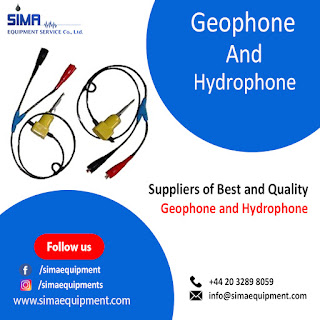How Seismic Sensor Suppliers Are Addressing the Growing Demand for Real-Time Data Monitoring
With the world experiencing greater seismic threats through natural and industrial processes, demand for real-time seismic monitoring systems is growing very fast. The main players in infrastructure, energy, mining, and geotechnical sectors now need instant access to ground motion data to avoid damage, minimize downtime, and provide safety.
In turn, each
forward-looking Seismic Sensor Supplier is evolving its technologies and
services to address these increased requirements with accuracy and
effectiveness.
Pushing Sensor Technology for Increased Accuracy
Seismic data
monitoring in real-time starts with dependable sensors that can sense even the
slightest ground movements. Contemporary seismic sensor providers are now
developing sophisticated equipment that can identify low-frequency and
high-frequency seismic activity with incredible precision.
●
Multi-axis sensors are overtaking
single-axis sensors to offer all-around movement monitoring.
●
Digital sensors send data faster
and have higher signal-to-noise ratios.
●
Increased sensitivity offers
improved early warning for abrupt changes in geological activity.
The accuracy of the
sensors is paramount in industries where immediate assessments of ground
movement are crucial for maintaining business continuity and mitigating risks.
Integration with High-Speed Seismic Cables
Dependable seismic
data communication relies significantly on the transmission infrastructure's
quality. This is where seismic cable technology is of utmost importance.
Seismic cables in
current times are designed to facilitate:
✔ High-bandwidth
data transfer without interruption to enable real-time updates.
✔ Long-distance
communication with little signal attenuation.
✔ Heavy-duty
construction to withstand severe environmental and subsurface conditions.
With real-time
monitoring increasingly becoming prevalent, seismic sensor manufacturers are focusing
on the design and supply of cables that have stable performance in diverse
terrains and weather conditions.
Adopting IoT and Cloud-Based Connectivity
The Internet of
Things (IoT) is transforming seismic monitoring through the connection of field
equipment with cloud platforms. The contemporary seismic sensor manufacturer is
now required to supply devices that are cloud-compatible and can integrate with
remote access systems.
●
Sensors are being integrated with
wireless modules to relay data instantly.
●
Cloud-based dashboards enable
centralized access to data from various locations.
●
Integration with AI algorithms
improves the capacity to identify patterns and potential threats early.
This networked
ecosystem facilitates easy monitoring of data, even in inaccessible or remote
locations, thus expanding the applicability of seismic monitoring systems to
various industries.
Custom Solutions for Industry-Specific Needs
Seismic monitoring
needs vary across different industries. Oil and gas companies might focus on
detection of movement underground, whereas construction companies might require
surface sensitivity when driving piles. To accommodate these varied needs,
seismic sensor providers are providing customized sensor arrays and seismic
cable designs.
Such a customized
approach allows each project to get a monitoring solution tailored to its
operational conditions, sensitivity requirements, and resolution needs for
data.
Improving Scalability and Flexibility
As projects grow in
size and regulatory requirements change, monitoring systems should be scalable.
Suppliers are increasingly developing modular sensor systems that scale with
the scope of the project.
●
Plug-and-play modules make it easy
to add new sensors.
●
Seismically scalable cable
networks can couple multiple monitoring locations without latency.
●
Portable kits are being developed
for temporary or mobile applications.
That flexibility
provides long-term value and flexibility in dynamic field conditions.
In Conclusion
The worldwide need
for real-time seismic data monitoring is transforming the way the industry
responds to sensor and cable technology. Through the enhancement of sensor
precision, the development of improved Seismic Cable performance, and the
inclusion of smart connectivity, each forward-thinking seismic sensor provider
is helping to drive the modern safety and monitoring infrastructure.

.jpg)


Comments
Post a Comment